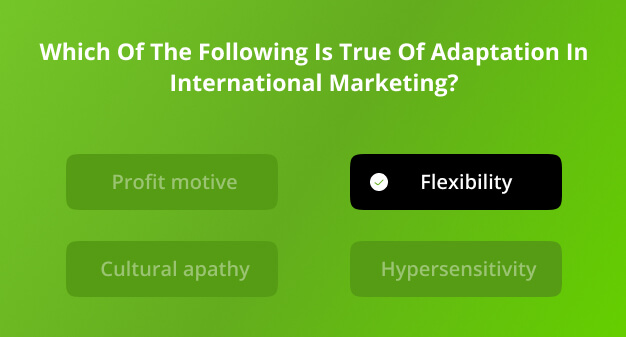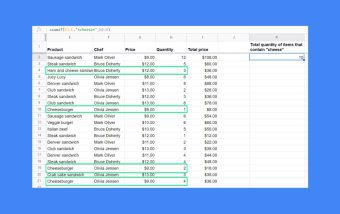Why Most Ecommerce Brands Misread ‘Low Traffic’ Product Pages (And How Smart SEO Agencies Fix It)
Dec 23, 2025

Dec 23, 2025

Dec 23, 2025

Dec 23, 2025

Dec 22, 2025

Dec 22, 2025

Dec 22, 2025

Dec 22, 2025

Dec 22, 2025
Sorry, but nothing matched your search "". Please try again with some different keywords.

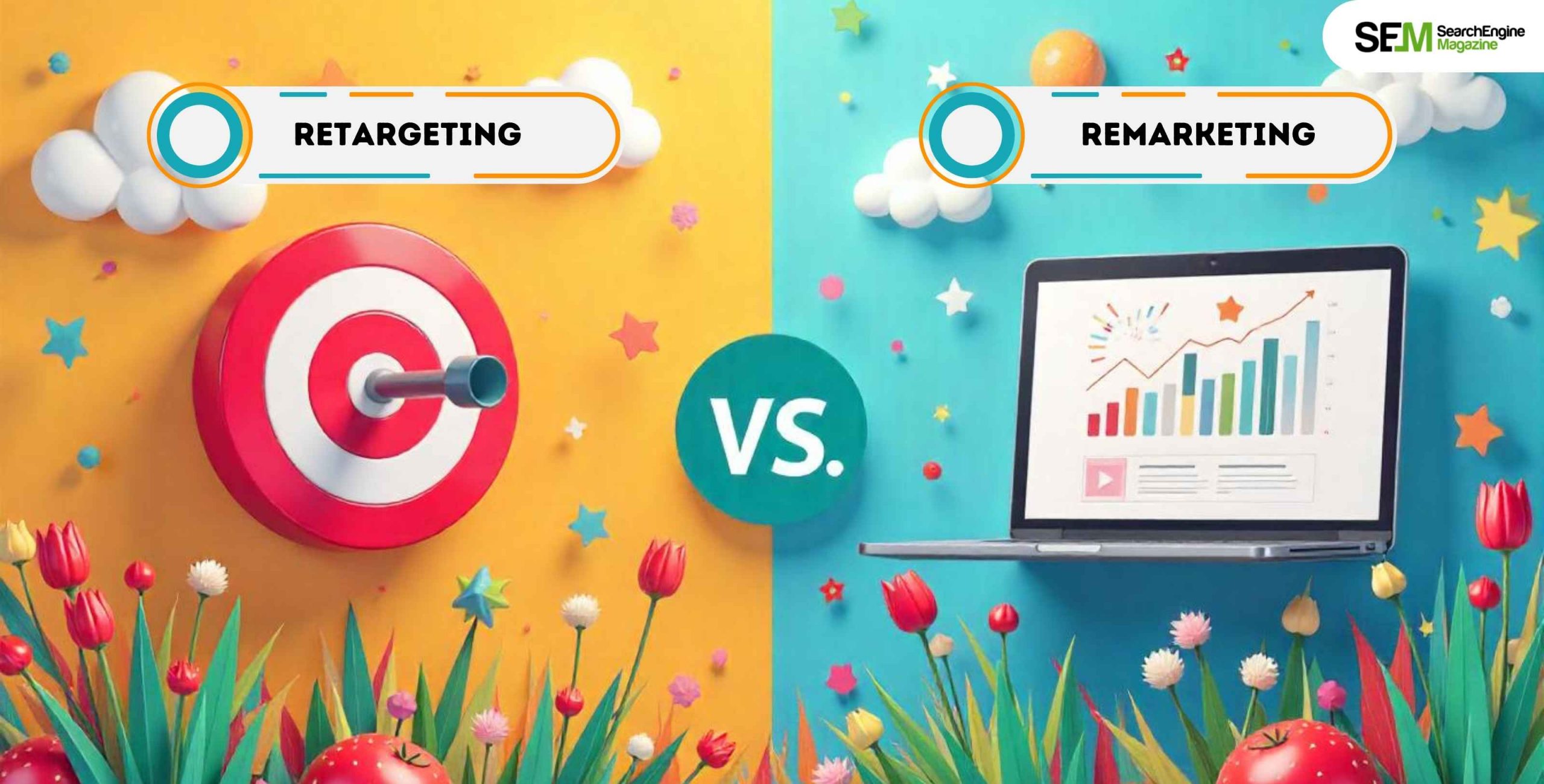
Digital marketing for businesses is all about finding out how to stay in communication with your target audience, strengthen bonds, and find causal visitors to a website and transform them into customers.
One highly effective way to do this is by re-engaging those who have already interacted with your brand. This brings us to the terms “retargeting” and “remarketing,” often used interchangeably but with slight, important differences.
Differences between retargeting vs remarketing will help you select the most suitable strategy based on your goals and the nature of your audience.
In this article, we shall discuss, in detail, the concepts of retargeting and remarketing, understand their respective strategies and benefits as well as challenges, and see which could be implemented to create customer acquisition and retention.

At its very basic level, retargeting is a form of online advertising that focuses on redirecting people who visited your website but did not take the desired action there, such as buying, filling in a form, or signing up for your newsletter.
Retargeting aims to re-engage these people and get them back to your site to complete the next step in their customer journey.
It often employs cookies; it drops them on a visitor’s browser as they switch between several sites. Here, since a visitor had visited your site, a cookie was dropped on their browser, marking them out for subsequent ads. At some point, visitors will begin getting ads for your products or services as they continue web surfing.
While knowing more about retargeting, here are a few basics elements of retargeting that you should know about:
The main goal behind retargeting is to remind the users of the brand and make them take an action that they couldn’t at the first attempt visit.

Although remarketing is nearly a colloquialism, and the term retargeting is often used interchangeably, small differences exist between both. Remarketing is usually defined as re-engaging with customers through email marketing or other direct communication channels after interacting with your website or app.
Remarketing campaigns usually target people who have earlier manifested some interest in your brand by completing an action such as visiting your website or putting products in a cart, but, contrary to retargeting, which displays ads everywhere online, remarketing is very often much more personalized through mail, SMS, and even push notifications.
For example, suppose a person added something to their shopping cart but did not purchase it. In that case, the remarketing campaign message might be an email personalized for the item the customer forgot, maybe with a discount, to spur a return and complete the sale.
This means that the communication for remarketing is often in direct messages such as email or SMS and push notifications rather than a display advertisement.
This style of remarketing is likely to be more personalized because there is information about past behavior that can be used to reconnect with customers. For example, items left in the shopping cart.
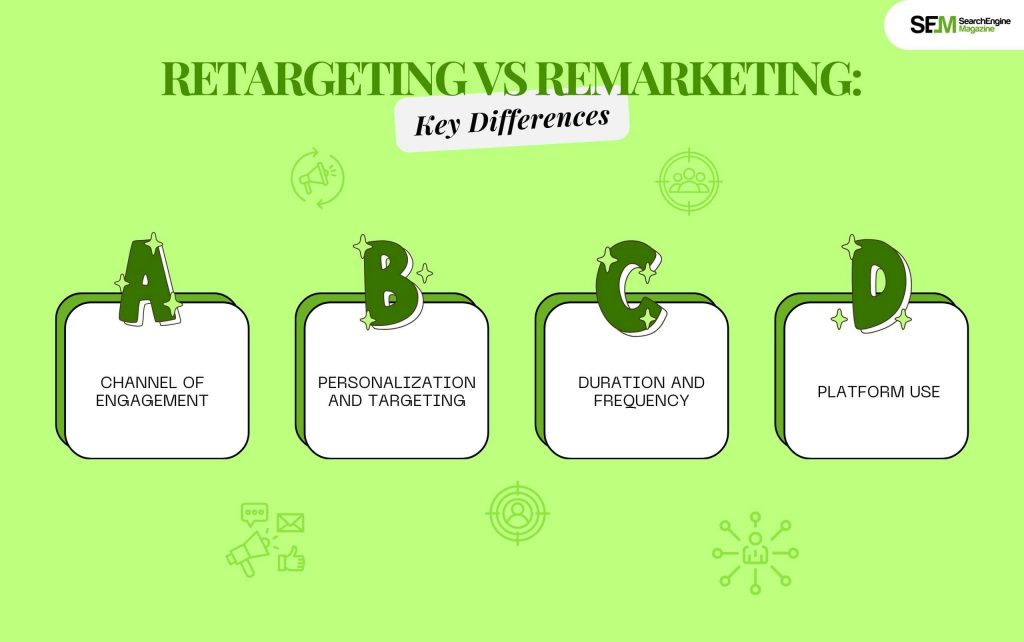
Since retargeting and remarketing exist to bring users back to your website to convert them into paying customers, the difference mainly revolves around how these tactics are carried out and the tools that help access customers.
Retargeting mainly relies on display ads. These are the types of ads following users anywhere around the web. They appear on websites, social media, and apps users log into or visit after leaving your site.
It may involve search engine ads, including Google Ads, in which your advertisements will be displayed to individuals who initially interacted with your website.
Instead, remarketing uses more direct contact forms like email marketing, SMS, or push notifications. Remarketing, therefore, allows for more personalized messages. Businesses can target users based on their previous interactions with specific products or services.
Personalized yet general retargeting: To be honest, retargeting is nothing but general. For instance, retargeting ads are generally seen based on overall behavior, like visiting a product page or browsing under a certain category.
These ads may not always feature the very item that the user has interacted with, though this can happen if the campaign is set up with dynamic retargeting.
Remarketing will likely be significantly more personalized. Since remarketing happens via direct communication or mail, the company can write incredibly targeted messages pertinent to the user’s prior behavior, like abandoned cart emails or product suggestions based on the items they browsed.
Retargeting can be more persistent over time as users continue to see display ads across multiple websites and social platforms. The frequency of ads can be adjusted, but the goal is to keep your brand in mind until the user returns to make a purchase or complete the desired action.
However, remarketing campaigns are typically timelier and less often. For instance, the cart abandonment remarketing email is sent out a few hours after a cart has been abandoned. Still, previous purchase remarketing emails periodically suggest items or offer special offers to purchase.
Retargeting is mostly done at the advertising networks. It includes but not limited to Google Ads, Facebook Ads, Instagram, and Google Display Network. These websites allow you to add ads on millions of sites that the users can visit once they leave your site.
Some of the most common remarketing platforms include email marketing platforms, SMS, and push notification services. Although remarketing can occur on some platforms like Facebook. It is more in the line of re-engagement through direct and personalized communication.

Based on your business goals, where you are in the customer’s journey. The degree to which you want to be personal, and the nature of the products or services. You need to choose between retargeting vs remarketing.
When it comes to retargeting strategy, there are certain scenarios when you can apply these retargeting strategies. Here are a few scenarios when you can start retargeting your audience.
If a person targets many audiences, they reach his website and stay visible. Then retargeting is an excellent approach in which one can grab eyeballs and raise awareness of the ads through multiple displays on different media.
Retargeting makes sense only if you have high-traffic landing pages or product pages. So, remind visitors about products they might have shown interest in but did not buy.
In a situation where brand recall and remembering a brand in the consumer’s mind is sought, retargeting is perfect. Even when the consumers are not ready to purchase at that moment. Exposure to multiple ads or messages builds up trust and familiarity.
Very big e-commerce stores or high-traffic websites will benefit from retargeting ads, mainly when visitors do not convert immediately. Dynamic retargeting would be great in such situations where they show the users the same products they viewed.
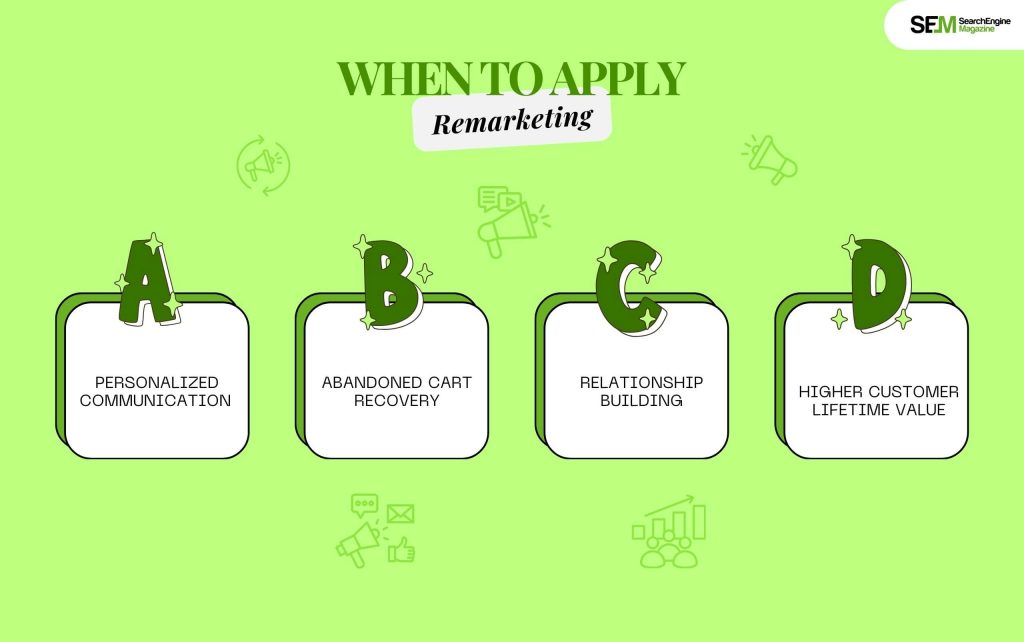
Since the reasons to apply retargeting and remarketing are different, the strategies of both these marketing are also different. Now that you know when to apply retargeting your audience. Let’s get to know when you should remarket to your audience.
One approach to customer communication is remarketing, whereas the goal is to contact customers more personally. A reminder email, SMS, or push notice about products left behind or an exclusive discount code should establish a direct channel with the customer.
Remarketing is quite effective for recovering lost sales: an abandoned cart reminder with a specific offer increases your chances of converting by several percent.
Remarketing also enables you to maintain relationships with customers through targeted product recommendations for goods previously purchased or browsed to keep customers hooked and help in return buyers.
Remarketing provides the best chance for companies to form deeper, longer-term customer relationships that translate into increased Customer Lifetime Value. You foster repeat business through targeted, personalized offers, discounts, product recommendations, or loyalty incentives.
Between retargeting and remarketing, deciding which would suit your business better is very challenging. Both are supposed to serve different functions and can go well together.
Retargeting is good at targeting a high volume. Keeping your brand in mind among users throughout the web, and remarketing offers a much more personal approach likely to result in conversions and, later on, customer loyalty.
However, it ultimately depends on your business goals, who you want to target, and what kind of resources you have. If you want maximum brand awareness and a broader return of visitors. Retargeting would be the best choice.
Now if you wish to nurture relationships and recover the ones who have abandoned their carts. Remarketing will teach you how to benefit from this kind of approach.
Proper use of retargeting and remarketing can develop a holistic strategy for the business. So that the customers’ engagement process remains intact throughout the journey from their first interaction to repeat purchases.
You May Like To Read:
Nabamita Sinha loves to write about lifestyle and pop-culture. In her free time, she loves to watch movies and TV series and experiment with food. Her favorite niche topics are fashion, lifestyle, travel, and gossip content. Her style of writing is creative and quirky.
View all Posts
Why Most Ecommerce Brands Misread ‘Low Traf...
Dec 23, 2025
Twitter Marketing: How To Promote & Engag...
Dec 23, 2025
Reporting SEO: How To Create The Perfect SE...
Dec 23, 2025
Guide To Agile Certification Courses At Itsm ...
Dec 22, 2025
Why SimRigs Turn-Key Racing Simulators Are th...
Dec 22, 2025
